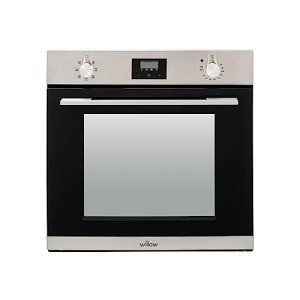The Rise of Built-In Ovens: A Seamless Approach to Modern Cooking
In contemporary cooking areas, where design aesthetic appeals blend effortlessly with performance, one home appliance stands out as a real game changer: the built-in oven. As intergrated electric oven and chefs alike continue to seek innovative services that improve their cooking experience, built-in ovens have ended up being increasingly popular. This article checks out the advantages, factors to consider, and trends surrounding built-in ovens, highlighting why they are a necessary function in modern-day cooking areas.
What is a Built-In Oven?
A built-in oven is a kitchen area device developed to be integrated into the cabinets of a cooking area instead of standing alone. Unlike standard freestanding ovens, which can be moved and placed anywhere, built-in ovens been available in various styles and sizes to fit particularly within designated areas. Offered in single or double setups, these ovens provide a streamlined appearance that complements contemporary kitchen designs.
Benefits of Built-In Ovens
1. Space-Saving Design
One of the most enticing advantages of built-in ovens is their space-saving design. By integrating the oven into cabinetry, you can maximize important counter and flooring area. This is especially beneficial in smaller sized kitchens, where taking full advantage of room is essential. Built-in ovens can be set up at eye level, making them more accessible and decreasing the need to flex down.
2. Visual Appeal
Built-in ovens contribute to a sleek and cohesive kitchen area design. Offered in various finishes-- such as stainless-steel, black, white, and custom-made cabinetry-- they can blend effortlessly into the overall design. This visual appeal boosts the kitchen's visual consistency and elevates the area, creating a modern and advanced atmosphere.
3. Boosted Functionality
Numerous built-in ovens come equipped with sophisticated cooking innovations, such as convection cooking, steam ovens, and clever features. These enhancements enable versatile cooking options, making it simpler to achieve professional-level outcomes in your home. Smart built-in ovens can even link to Wi-Fi, allowing users to control the oven from another location, get alerts, and access a variety of cooking programs and dishes.
4. Improved Ventilation
Due to the fact that built-in ovens can be integrated with kitchen area hoods and ventilation systems, they can help preserve much better air quality and lower cooking smells. This is especially substantial for those who enjoy to prepare with aromatic spices and active ingredients, as an effective ventilation system can keep the kitchen comfortable and welcoming.
5. Modification Options
Built-in ovens provide a wide range of personalization alternatives to suit specific cooking designs and needs. From professional-grade appliances with multiple cooking modes to compact styles for smaller kitchen areas, house owners can choose the oven that fits their specific requirements. Lots of manufacturers likewise provide personalized front panels, allowing you to match the oven's look to your cabinets for a truly merged look.
Considerations When Choosing a Built-In Oven
While built-in ovens have numerous advantages, there are very important considerations to keep in mind before purchasing:
1. Price
Built-in ovens usually come with a greater rate tag than their freestanding equivalents due to their design and setup requirements. It's crucial to element in both the expense of the oven and any extra costs associated with cabinets modifications or installation.
2. Setup Requirements

Installing a built-in oven frequently requires professional help, especially if you require to modify existing cabinets. Make sure that you think about any expenses related to setup, including labor and prospective kitchen cabinetry adjustments.
3. Size and Dimensions
Before buying a built-in oven, determine the designated space precisely to ensure an appropriate fit. Built-in ovens can be found in different sizes and setups, so choosing one that aligns with your needs and kitchen style is essential.
4. Lifestyle and Usage
Consider your cooking routines and needs when selecting a built-in oven. If you frequently host large events, a double oven may be more helpful. On the other hand, if you have a compact kitchen, a single-wall oven may suffice.
Trends in Built-In Ovens
The cooking area device market is constantly evolving, and built-in ovens are not exempt from emerging trends. Some present patterns consist of:
Smart Technology Integration: With the increase of wise home innovation, built-in ovens now often feature connection options. This allows users to monitor cooking development and adjust settings through mobile apps.
Energy Efficiency: As sustainability becomes a top priority, lots of manufacturers are investing in energy-efficient built-in ovens that lower energy consumption while keeping efficiency.
Multi-functional Designs: Built-in ovens now use features such as air frying, sluggish cooking, and steaming, offering adaptability that satisfies a large range of cooking approaches.
Conclusion
Built-in ovens certainly represent a perfect mix of design, function, and convenience in today's cooking areas. As more homeowners go with this contemporary option, the focus moves to producing a cooking area that is as visually pleasing as it is useful. Whether you are developing a brand-new home or remodeling your cooking area, thinking about a built-in oven might raise your culinary experience and change your kitchen into a stylish and functional sanctuary. With a selection of alternatives readily available and continuous developments in innovation, built-in ovens remain a standout option for both amateur cooks and culinary lovers alike.
